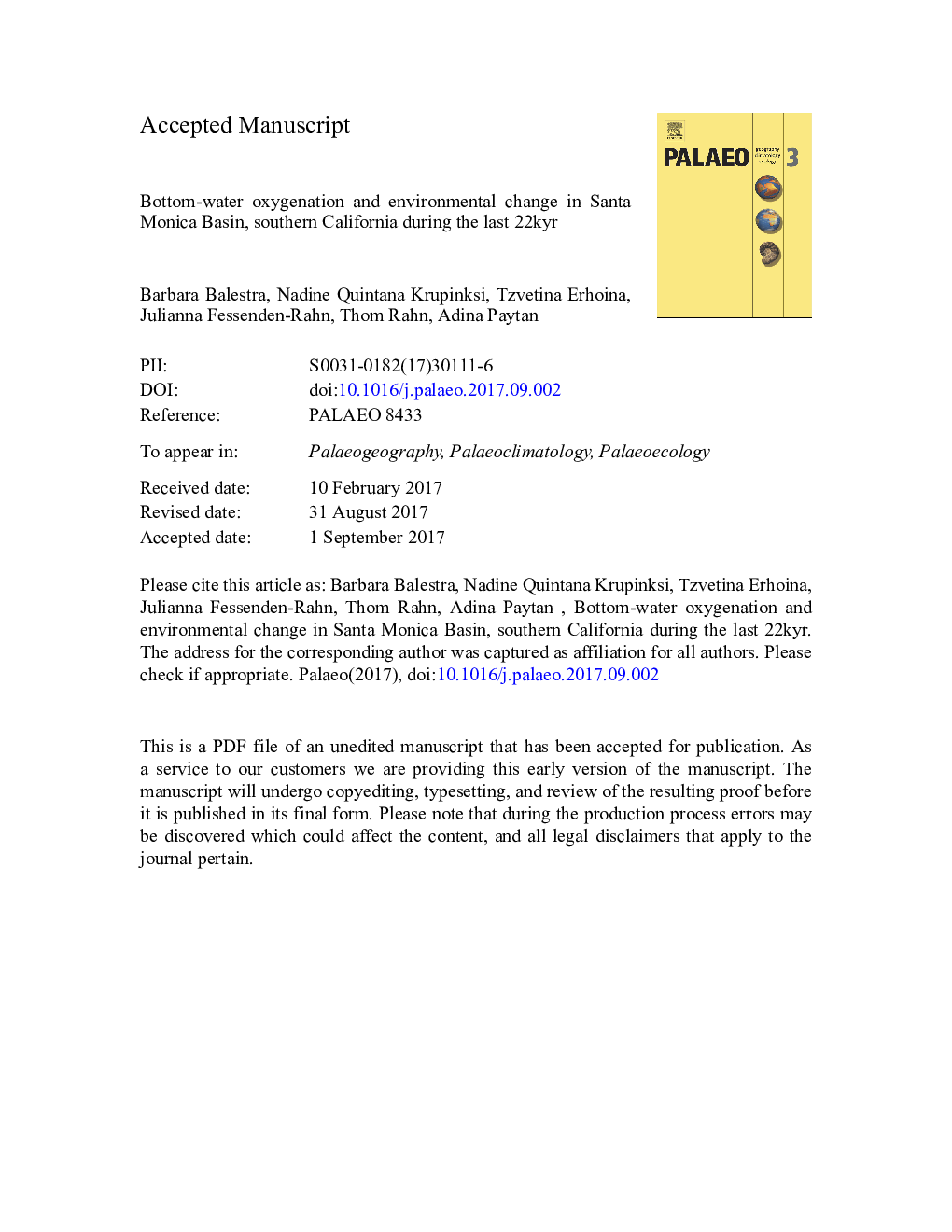| Article ID | Journal | Published Year | Pages | File Type |
|---|---|---|---|---|
| 8868427 | Palaeogeography, Palaeoclimatology, Palaeoecology | 2018 | 74 Pages |
Abstract
The Southern California Borderland is a region that experiences strong natural variations in bottom water oxygen and pH. We use marine sediments from Santa Monica Basin to reconstruct environmental conditions in the basin's bottom water from the Last Glacial Maximum (LGM) to present. We then compare the records to the adjacent Santa Barbara Basin and Santa Lucia Slope. High-resolution records of benthic foraminiferal oxygen and carbon isotopes (δ18O and δ13C), benthic foraminiferal assemblages, and bulk sedimentary organic matter geochemistry records exhibit major changes associated with late Quaternary millennial-scale global climate oscillations. Our data show the dominance of lowâoxygen benthic foraminiferal assemblages during warm intervals, and assemblages representing higher dissolved oxygen during cooler intervals, as also seen in Santa Barbara Basin and Santa Lucia Slope. However, our record shows a stronger and longer-lasting oxygen minimum zone (OMZ) between the mid Younger Dryas (YD) and the Early Holocene than at neighboring sites, indicated by dominance of Bolivina tumida (characteristic of major hypoxia) in the assemblage. The middle to late Holocene (from ~ 9 to 0 kyr) had weaker hypoxia than the early Holocene, with assemblages mainly composed of Bolivina argentea and Uvigerina peregrina. Santa Monica Basin remained slightly hypoxic throughout the past 23 kyr, however, differences in the degree of hypoxia from Santa Barbara Basin and Santa Lucia Slope (especially from the B-A to the Early Holocene) are seen. The Santa Monica Basin bottom water is affected by regional processes, such as changes in the source of intermediate water and/or changing ventilation (oxygenation) of the intermediate water source. This is due to the greater depth and the more southern geographic position of the Basin, which reduces exposure to the oxygenated North Pacific Intermediate Water current. Additional local processes also affect the basin, such as the effects of sediment influx from submarine canyons. This analysis utilizing parallel geochemical and micropaleontological records brings new insights into bottom water and climate conditions in Santa Monica Basin, indicating regional similarities and differences from adjacent basins, and provides insight into the causes for changes in bottom water oxygenation.
Keywords
Related Topics
Physical Sciences and Engineering
Earth and Planetary Sciences
Earth-Surface Processes
Authors
Barbara Balestra, Nadine B. Quintana Krupinski, Tzvetina Erohina, Julianna Fessenden-Rahn, Thom Rahn, Adina Paytan,
